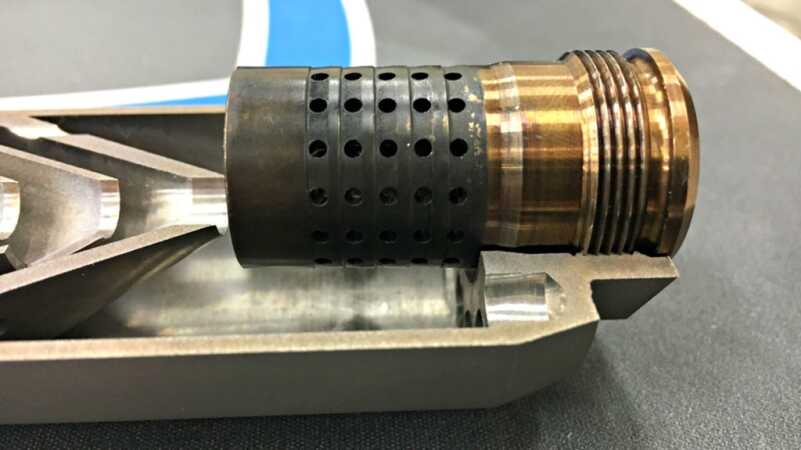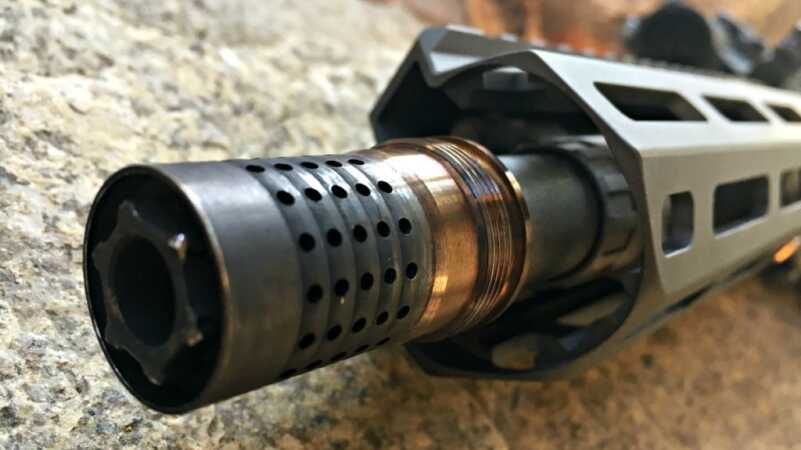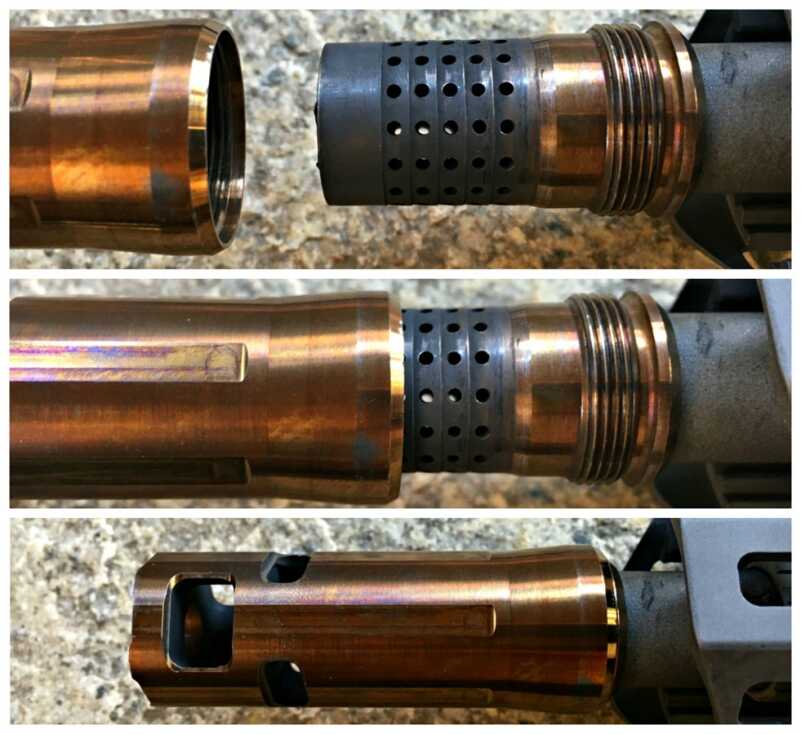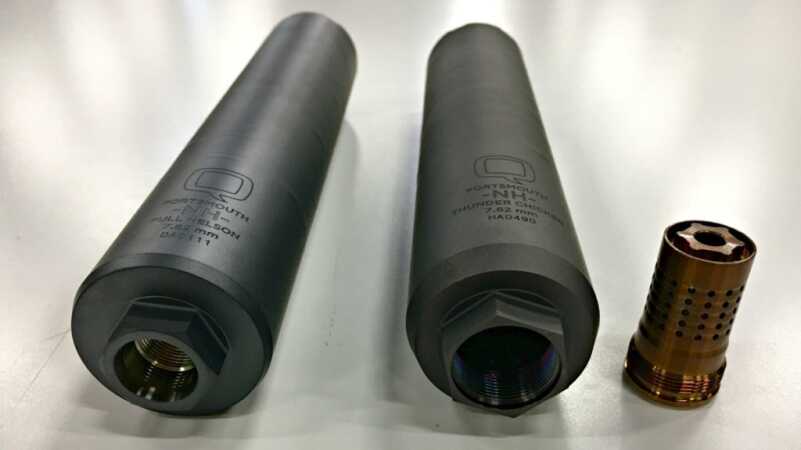A lot of things in the firearms industry are done because…that’s the way we’ve always done it. So it is nice to see innovation make its way into the gun industry, specifically in the use of tapers.
Backing up, what is a taper? It’s a simple machine, like an inclined plane moving 360 degrees in a circle. What’s so special and magical about them? It comes down to physics.
The benefits play out in a number of ways. With respect to tapered barrels, muzzle devices, and silencers/suppressors is their ability to self-center. Accurate shooting is based on repeatability and consistency. Tapers allow perfect, consistent alignment between barrels, muzzle devices, and silencers.
But how? Think about holding a funnel or cone. If you drop a marble into the wide mouth, the marble will immediately find the center. The same principle is in effect between a barrel and muzzle device. The outer geometry of the taper on the barrel makes contact and trues itself against the inner geometry of the muzzle device, immediately aligning the two together.
How does this benefit us though? Well, have you ever heard of a baffle strike? When things are out of alignment bad things begin to happen. Additionally, tapers are easy to true compared to a square shoulder on most barrels. While it looks flat and square, what is it square with respect to? The opening at the end of the barrel or the entire length of the barrel? (Which can be two different things)
Another huge advantage to tapers is how tight they get with minimal effort. When you tighten two tapered surfaces together, it takes more force to break them free from each other than it did to tighten them. How does that work? Science. You are ultimately smearing two large surfaces together. Think about that inclined plane like a doorstop, but this time you have a 360-degree doorstop. The same principle is used to keep tools in place on lathes.
This plays out in the ability to hand tighten a silencer onto your rifle and be assured it won’t come loose. You don’t need any mechanical latching mechanism, no teeth or ratchet, just hand-tighten it. Tapers combined with some fine threads will secure your muzzle device or silencer without anything else needed.
And here we come to another important aspect of tapers. That tight surface when one taper lines up against another, if machined properly, is tight. Really, really tight. So tight in fact that gasses can’t push back through it. This benefits us by not allowing gas to blow back out of the silencer. If the silencer is designed properly with the taper in front of the threads, it will seal those gasses out, keeping the threads clean from any carbon, ensuring you can always take your silencer or other devices off.

A cutaway photo of the Q Thunder Chicken silencer and how the tapers interface between the silencer and muzzle device. Keeping the threads on the Cherry Bomb free of any carbon.
Of course, due to the tight seal tapers create, if a silencer is poorly designed, bad things happen. If the taper is behind the threads, all the carbon will begin to deposit in the threads. A friend of mine recently got his silencer stuck on his muzzle device. How stuck? Well the muzzle device, which was attached to the conventional squared off shoulder of the barrel, with Rocksett, broke free of the barrel. The muzzle device welded itself into the silencer with carbon. He eventually got it sorted. He soaked the silencer, with fused muzzle device, in a solvent. Then he re-Rocksett the muzzle device and finally broke the silencer free.
His experience isn’t unique: Tapers ensure alignment, allow for secure lock up with just hand tightening and seal out gasses. And they are, compared to squared shoulders on conventional barrels, easy to measure for accuracy. All these benefits in a nice simple design element.
It should also be mentioned that they don’t require timing. There are no shims or spacers to misalign or need for any application of something like Rocksett. Having said this, they also can’t be timed. So while you can make great performing muzzle brakes and flash hiders, you can’t make timed muzzle brakes. I guess there is no free lunch…
I think the benefits of tapers will be felt across the industry as more and more manufacturers utilize them. Right now Sig Sauer uses tapered barrels on a number of their weapons systems, Heckler & Koch on some rifles, all of the Q weapons (Honey Badger and Fix Rifle) and silencers, and a few different barrel companies are on board as well.

After high volumes of fire, the threads stay clean when the taper is placed in front of the threads.
Next time you are in the market for a rifle, barrel, muzzle device or silencer, take a look at how it’s designed. While tapers may seem mundane and simple, their incorporation into weapons systems provides a myriad of benefits.






Great article but there is no discussion on how the cherry bomb is aligned to the barrel.Are you assuming all threaded muzzles on barrels have a square sholder that is concentric with the bore?
Who ever believed the feds would give up a tax ?
President Trump had 21 month’s to make some sort of Safe Hearing Act happen. Now with Democrat/Socialist overreaching body that is out to get him we will not see a Law that is Common Sense that protects hearing in a while.